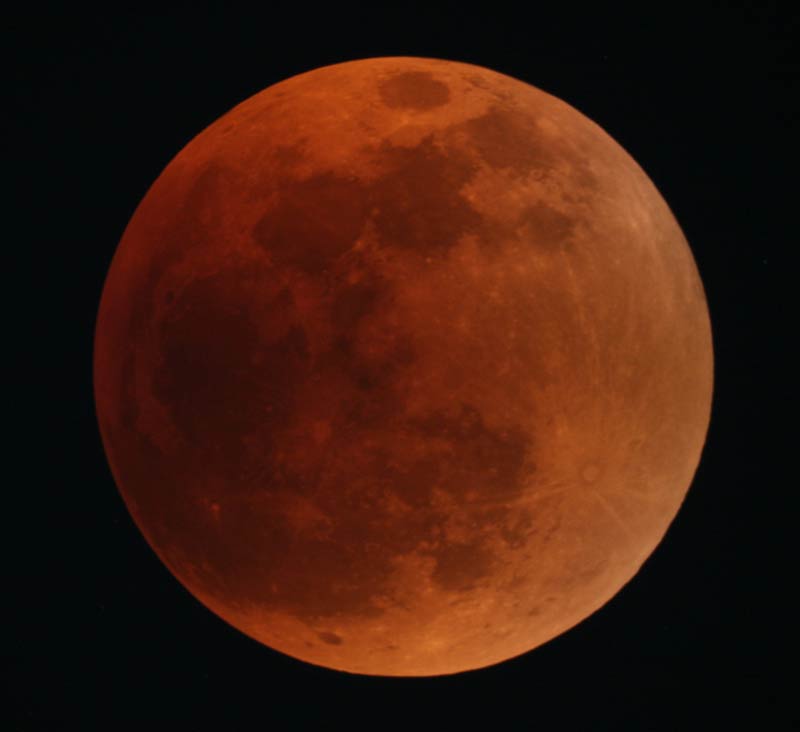Next Wednesday, 8 October, there’ll be a fabulous reason to stop what you’re doing, grab your camera and look up. In the early evening – in Australia – a total lunar eclipse will mean that the full Moon will appear to turn red.
This ‘blood moon’ will be the second total lunar eclipse for 2014 and it promises to be even better than the first. For most of us the Moon will be higher in the sky and so easier to see. And the whole eclipse will be visible (weather permitting) from eastern and central Australia; people in Western Australia will get to see most of it as well.
This great photo of the Moon in eclipse was taken from Sydney Observatory in 2007. Photo: Geoff Wyatt.
Why will the Moon appear red?
A total lunar eclipse occurs when the Sun, Earth and the Moon are in alignment, so that the Moon is in Earth’s shadow. But the Moon doesn’t fall into complete darkness.
“Due to the refraction of sunlight through the Earth’s atmosphere the Moon doesn’t appear totally dark, instead it looks red or orange – like the glow of a sunset,” says Rob Hollow, Education Officer with CSIRO Astronomy and Space Science.
When should I look up?
The whole eclipse will happen quite slowly, over a period of about 3 hours.
In eastern Australia the eclipse will start after sunset at 7:15pm AEST (8:15pm AEDT); in central Australia it will start at 6:45pm ACST (7:45pm ACDT).
It will take 1 hour and 10 minutes for the Earth’s shadow to completely cover the Moon. Once reached, this period of ‘totality’ will last for about an hour before the shadow starts to recede.
In Western Australia the Moon will rise partly in eclipse and totality will start just after sunset (6:25pm AWST).
While the best view of the eclipse will be from the Pacific Ocean and surrounding regions other parts of the world will also get to see it (take a look at timeanddate.com for locations and times).
“Lunar eclipses are safe to view and you don’t need any filters or safety equipment,” says Rob.
When will the next total lunar eclipse happen?
According to Sydney Observatory a total eclipse of the Moon is visible from Australia on average every 2.8 years, although the number of lunar eclipses in a year can range from none up to a maximum of three.
After 8 October, the next total lunar eclipse will take place on 4 April 2015.
So grab a seat, relax and enjoy the show.
In Australia, daylight saving time starts at 2am on Sunday 5 October 2014 in New South Wales, Victoria, South Australia, Tasmania and the Australian Capital Territory.
UPDATE 9 October 2014: It was all clear skies for some and cloud for others. For those who did get to see the total eclipse it was an impressive sight indeed. Take a look at some of the lunar eclipse photos from across Australia and Asia on our News@CSIRO blog.
And if all the excitement surrounding this eclipse has left you wanting to know more, then take a look at this great lunar eclipse ‘explainer’ by Tanya Hill at The Conversation.



8th October 2014 at 4:14 pm
I believe the cemetery is the best vantage point to view it in Dalby!
3rd October 2014 at 2:04 pm
Reblogged this on News @ CSIRO and commented:
You won’t want to miss out on next Wednesday’s total lunar eclipse. Check out some tips from our Universe blog on the best times to view it.